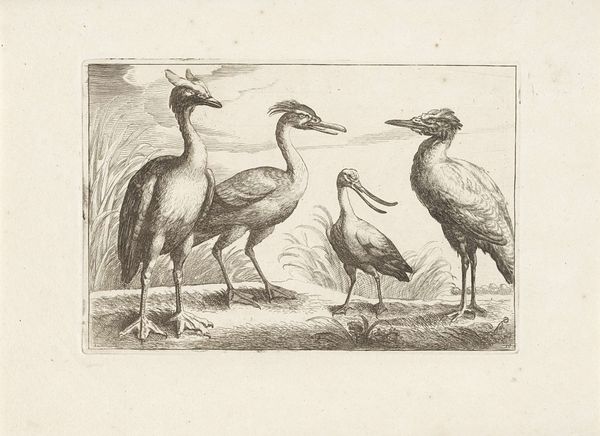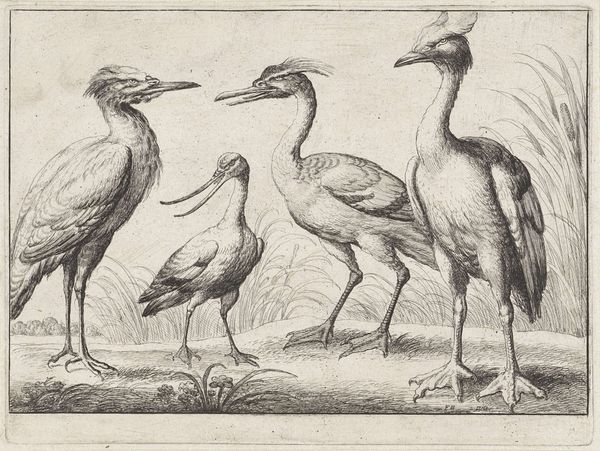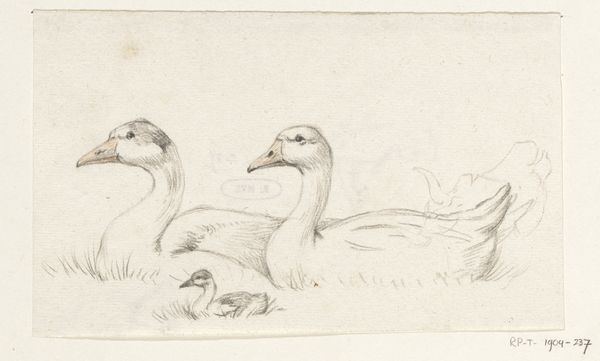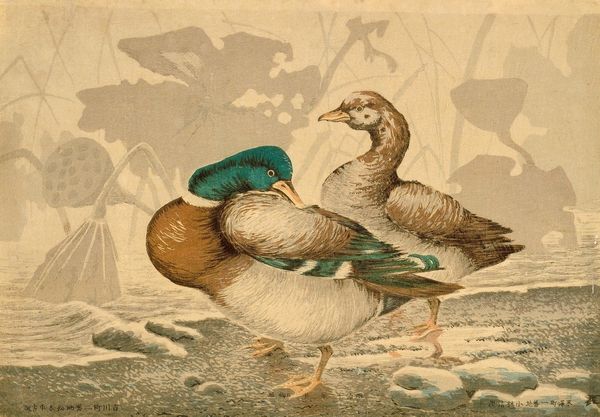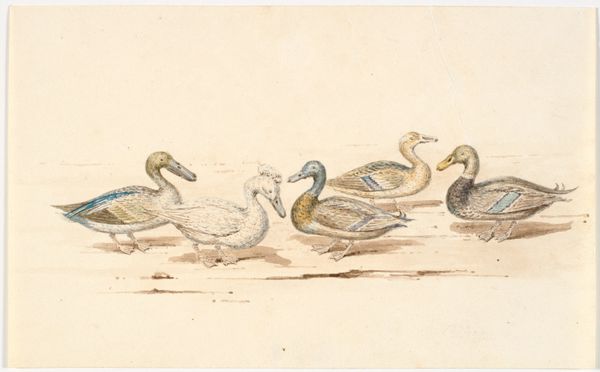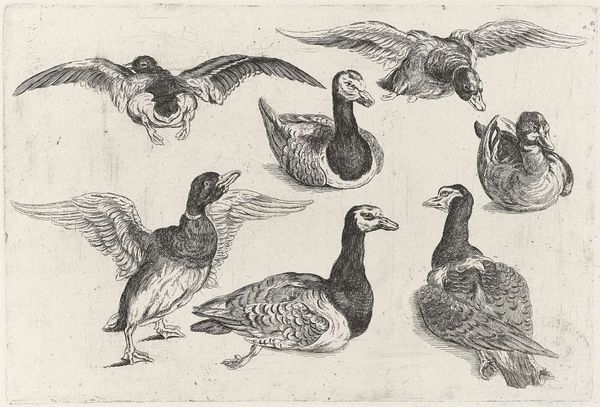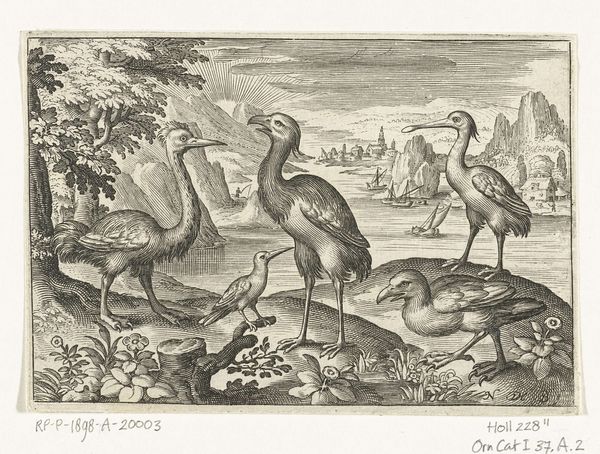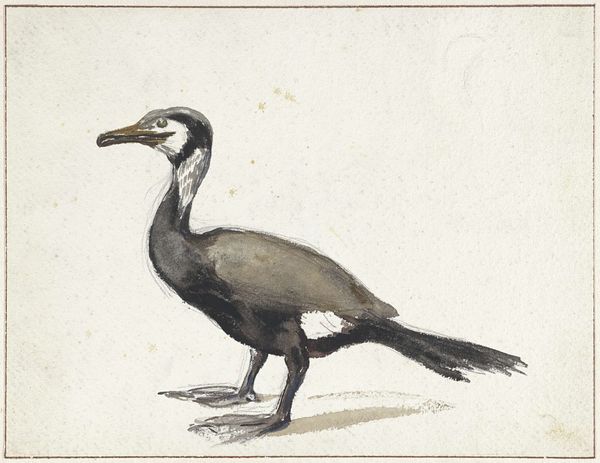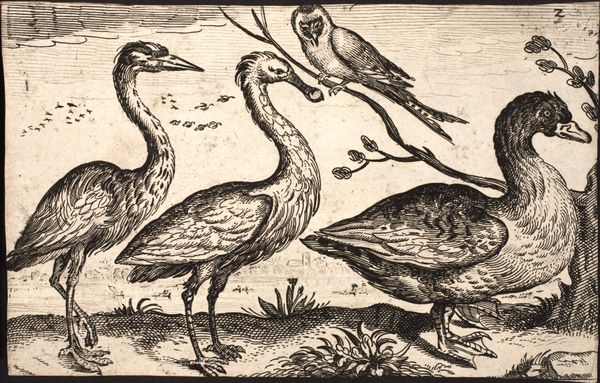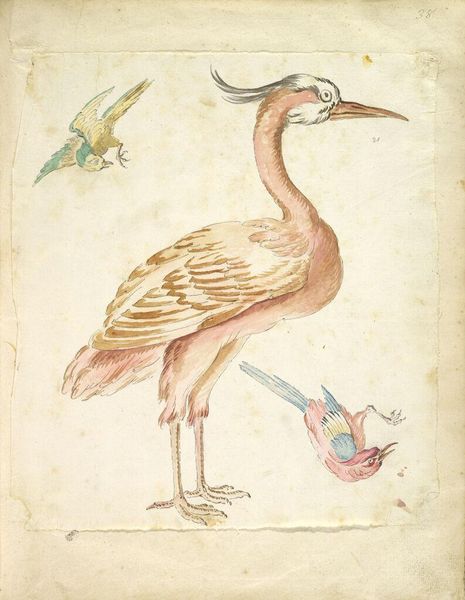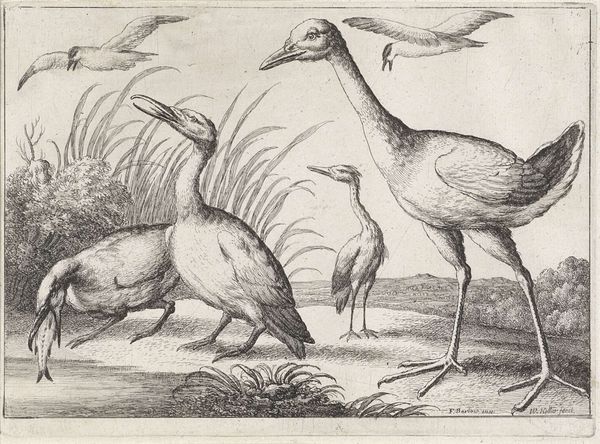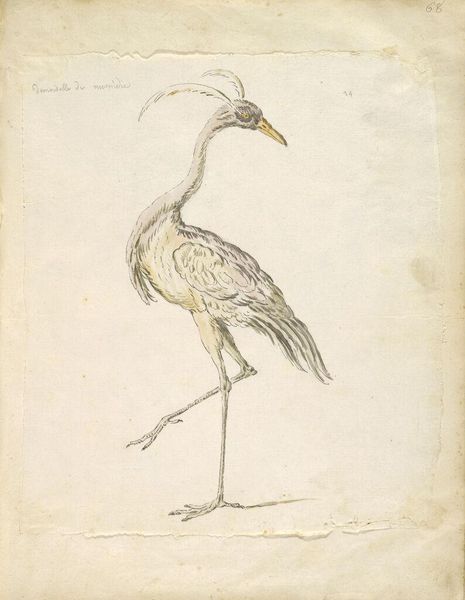
drawing, watercolor, pencil
#
drawing
#
pencil sketch
#
landscape
#
watercolor
#
pencil drawing
#
pencil
#
watercolour illustration
#
genre-painting
#
realism
Dimensions: height 253 mm, width 355 mm
Copyright: Rijks Museum: Open Domain
Curator: Jan van Essen created this drawing titled "Pelicans in Artis Zoo" in 1880, using watercolor and pencil. What are your first thoughts? Editor: Stark and a bit melancholic, wouldn’t you say? The grey washes create a somber mood, despite the seemingly ordinary subject matter. Curator: Yes, and I find the composition itself intriguing. The arrangement of the pelicans – three complete studies and a partial beak – demonstrates an exploration of form and contour, using line and tonal variation to create depth and texture. Editor: Pelicans are ancient symbols of charity and self-sacrifice, linked to the Christian myth that they pierce their own breasts to feed their young with their blood. Seeing them in this context... makes me think of the paradox of zoos, holding nature captive. Curator: An interesting perspective. From a formal perspective, notice how the artist's hand meticulously renders the plumage in subtle gradations of gray, giving substance and weight to the birds' forms. It contrasts with the ethereal sketch of a pelican beak, suspended above. Editor: It’s like seeing the skeleton of an idea. Are they trophies, studies or reflections of a deeper meditation on these captive creatures? Van Essen inscribes "Artis 1880" at the bottom—it’s quite direct, locating them to the here and now. This almost asserts, or re-asserts, their existence. Curator: True. The inscription firmly roots the artwork in reality, in observational study. And while you highlight their symbolic meanings, consider also how Van Essen utilizes negative space around each bird to create an almost tangible sense of atmosphere. Editor: Symbols speak differently over time. Looking at this work, it now echoes contemporary dialogues about conservation. Back in 1880, it may not have resonated this way, but now this melancholic tableau quietly challenges our relationship to nature. Curator: Indeed, a layered work that speaks through its structure, form and historical circumstance. It reminds us of the value of observing how both art and interpretation evolve. Editor: Leaving us to wonder at how art acts as both a record of culture, but also a mirror reflecting back at us over time.
Comments
rijksmuseum about 2 years ago
⋮
The Amsterdam artist Jan van Essen took the tram daily to Artis to study the animals. He was especially fond of the lions and large birds, such as pelicans, vultures and marabous. The sketches he made on the spot served as models in composing his paintings. He also derived inspiration from the work of the British artist and sculptor John Macallan Swan.
Join the conversation
Join millions of artists and users on Artera today and experience the ultimate creative platform.
